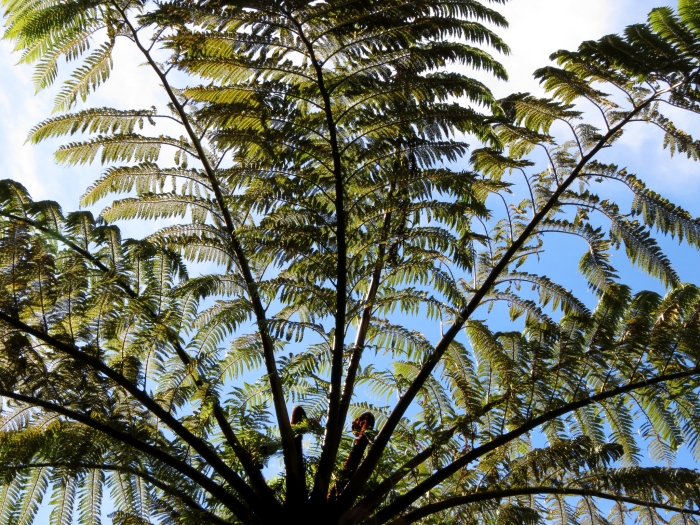Black Tree Fern
(Sphaeropteris medullaris)
Black Tree Fern (Sphaeropteris medullaris)
/
/

Katja Schulz
CC BY 4.0
Image By:
Katja Schulz
Recorded By:
Copyright:
CC BY 4.0
Copyright Notice:
Photo by: Katja Schulz | License Type: CC BY 4.0 | License URL: http://creativecommons.org/licenses/by/4.0/ | Rights Holder: Katja Schulz | Publisher: iNaturalist | Date Created: 2018-09-05T21:48:43-07:00 |






















































Estimated Native Range
Summary
Sphaeropteris medullaris, commonly known as Black Tree Fern, is an evergreen fern native to the temperate rainforests and cloud forests of New Zealand and other South Pacific Islands. It can grow to an impressive height of up to 20 meters, with a distinctive black trunk that is marked by hexagonal stipe bases from old fronds. The fronds are large, reaching up to 5 meters in length, and arch gracefully upwards from the crown, creating a dramatic visual effect. Young plants retain their dead fronds, but as they mature, these are naturally shed. This species is notable for its ease of transplanting when young and the ability to regenerate from newly felled trunks if kept moist.
The Black Tree Fern is valued for its lush, prehistoric appearance and has been awarded the Royal Horticultural Society’s Award of Garden Merit. It is a versatile plant in cultivation, adaptable to full sun, part shade, or full shade, and requires medium to high amounts of water. It thrives in soils with medium to fast drainage, making it suitable for a variety of garden settings. Common uses include focal points in shaded gardens, ferneries, and large containers. While generally low-maintenance, it can be susceptible to scale insects and may require protection from strong winds due to its large fronds. It is important to note that this fern should not be planted where it can become invasive outside its native range.CC BY-SA 4.0
The Black Tree Fern is valued for its lush, prehistoric appearance and has been awarded the Royal Horticultural Society’s Award of Garden Merit. It is a versatile plant in cultivation, adaptable to full sun, part shade, or full shade, and requires medium to high amounts of water. It thrives in soils with medium to fast drainage, making it suitable for a variety of garden settings. Common uses include focal points in shaded gardens, ferneries, and large containers. While generally low-maintenance, it can be susceptible to scale insects and may require protection from strong winds due to its large fronds. It is important to note that this fern should not be planted where it can become invasive outside its native range.CC BY-SA 4.0
Plant Description
- Plant Type: Fern
- Height: 15-60 feet
- Width: 6-15 feet
- Growth Rate: Slow
- Flower Color: N/A
- Flowering Season: Non-Flowering
- Leaf Retention: Evergreen
Growth Requirements
- Sun: Full Sun, Part Shade, Full Shade
- Water: Medium, High
- Drainage: Fast, Medium
Common Uses
Deer Resistant, Water Garden
Natural Habitat
Temperate rainforests and cloud forests
Other Names
Common Names: Korau , Mamaku , Sago Tree Fern
Scientific Names: Sphaeropteris medullaris , Cyathea medullaris , Alsophila extensa , Cyathea medullaris var. integra , Cyathea medullaris var. polyneuron , Cyathea polyneuron , Polypodium medullare
GBIF Accepted Name: Sphaeropteris medullaris (G.Forst.) Bernh.